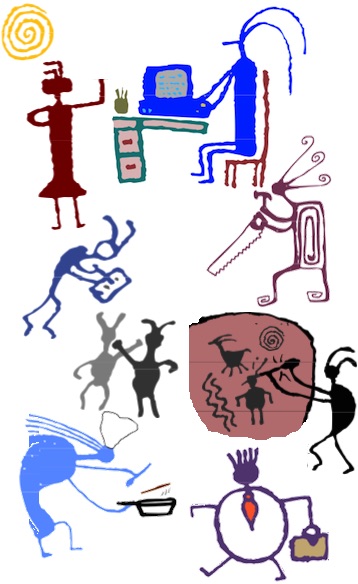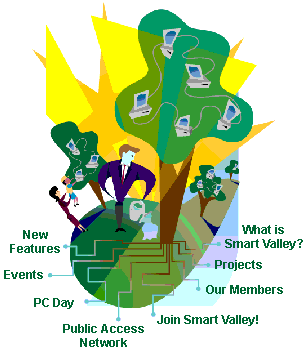Last week, I blogged about the controversy at the Art Institute of Chicago per their dismissing their entire volunteer docent membership and their plans to replace the volunteers with paid staff, in pursuit of a more diverse corps of museum guides to interact with the public.
GirlGuiding in the United Kingdom, the UK’s version of the Girl Scouts, has also incurred the wrath of many for one of its efforts at volunteer inclusion: on October 28th, the organization sent out a tweet that ended with, a shout-out to all of our asexual volunteers and members – thank you for everything you do in Girlguiding.
More than 2000 people liked the tweet. But the tweets-of-outrage were swift and many: the complaints focused on a belief that GirlGuiding was sexualising children with such messaging. One response that was representative of most of the negative responses: Why do your guides need to know whether your volunteers have a presence or absence of sexual desire? A nonprofit in the UK, Safe Schools Alliance UK, which has worked against allowing children to use the bathroom that corresponds with the gender with which they identify and works against bans on gay conversion therapy, is pushing back hard against the GirlGuide messaging. This group promotes its agenda as part of responsible safeguarding, the term used in the UK and Ireland regarding measures to protect the health, well-being and human rights of individuals, especially children and vulnerable adults, better ensuring they live free from abuse, harm and neglect.
I offer this info on this controversy for two reasons:
- Creating and launching efforts in support of the diversity of volunteers your organization has, or wants, and in support of accommodation of that diversity, will always attract complaints, immediately or eventually. There may be just a few, there may be many. Some of the complaints will be sincere and from individuals not a part of any “movement” or organization, and some of the complaints will be from volunteers and paid staff of very well-organized groups. Either way, your organization needs to have thought about how to answer questions and comments like why are you doing this and why is this necessary and this puts young people in danger.
- People asking the question or making the comment aren’t all obtuse or rigid. Don’t assume everyone complaining is so when you craft replies. Provide a response that comes from the point of view of this person just needs more and better information in order to support this statement or decision. Will such a response convince everyone? No. But your reply is being seen by people who aren’t entirely sure how they feel about the situation. Perceived arrogance on your part can drive those people who are on the fence into the arms of people and organizations who are only too happy to provide carefully word-smithed, detailed responses to frame their point of view.
My perspective: I adore GirlGuides and Girl Scouts of the USA. I deeply admire the commitment of both to ensuring all girls feel they can be a part of their activities. This isn’t the first time they’ve done something that’s lead to controversy. But no one – NO ONE – can say the GirlGuides and Girl Scouts don’t put safeguarding at the top of their list of priorities.
I also know that change can be painful – not just for others, but also for me. Work regarding inclusion and diversity is not easy, because many societal norms are deeply held, and cherished beliefs are challenged by conversations around inclusion and diversity – and that’s uncomfortable. It’s easy for a person to feel attacked during such conversations. I’ve seen diversity and inclusion experts be angered at the idea that they need for their own web sites to meet accessibility standards so that people with disabilities and using assistive technologies can access their online information – in their talks about inclusion, they were focused on ethnic and cultural groups, not people with disabilities, and the realization is embarrassing and painful.
I assure you that, eventually, even if you consider yourself an advocate for inclusion and diversity, you will have a moment where your own deeply held principles are challenged, and you will feel anger and you will be incredulous. Maybe you will decide to hold on to those principles – I’m not here to say you should or shouldn’t. But remember that feeling the next time you are facing it from someone else.
We’re all on a journey. That includes me.
One last thing: a chastisement to all of the organizations and consultants touting themselves as volunteer engagement experts and as the leaders of conversations on volunteerism who are silent on this and other controversies in volunteer engagement. I challenged you to comment on organizations that charge big money from volunteers, to comment on organizations that say if a person that has been assigned community service will pay a fee, the organization will give them a letter saying they did the hours required by the court which assigned that community service, to weigh in regarding governments wanting to require welfare recipients to volunteer in order to receive benefits and to comment about the situation at the Chicago museum – so far, you haven’t. In addition to having upbeat conversations about how managers of volunteers can build their brand or raise their profiles in their organizations or get a hug for International Volunteer Manager’s Day, we need to be having these very difficult conversations and controversial subjects. In fact, we should be leading the conversations.
And I love how the corporate world, which always has oh-so-much to say about how nonprofits should operate, are oh-so-silent during these conversations as well.
Also see:
- Managers of volunteers & resistance to diversity
- Decolonizing International Aid (including international volunteering)
- Accessibility, diversity & virtual volunteering
- Video Advocating for Diversity in Volunteer Engagement is NOT Easy: a 11:45 video about the pushback you will get when you talk about the need for diversity in volunteer engagement (2020).
- Recruiting Local Volunteers To Increase Diversity Among the Ranks (also explores the WHY)
- Systemic Exclusion in Volunteer Engagement
- More: systemic racism in volunteer engagement
- Welcoming immigrants as volunteers at your organization


